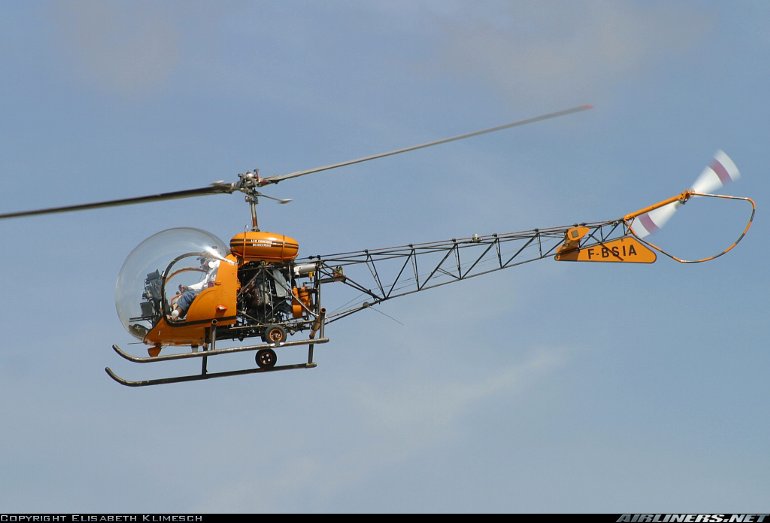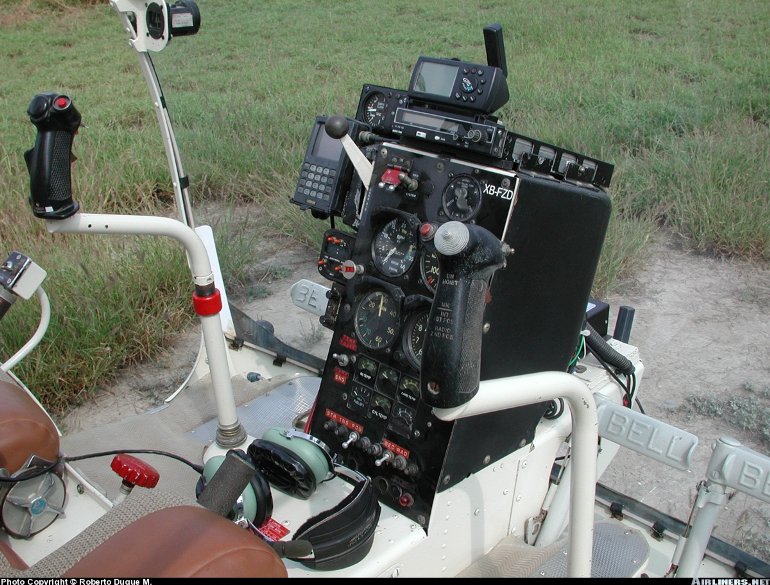Aircraft Technical Data
Bell 47


| Details | |
| Country of Origin | United States of America |
| Type | Two or three seat light utility helicopter |
| History | The familiar and distinctive Bell 47 is an especially significant aircraft as it was one of the world's first practical helicopters. The ubiquitous Bell 47 dates back to Bell's Model 30 of 1943, an experimental helicopter evaluated by the US Army (10 were ordered for that service). The first subsequent prototype Bell Model 47 (with a car type cabin and two seats) first flew on December 8 1945. In May 1946, this early model Bell 47 became the first civil helicopter in the world to gain civil certification. The first civil variants to see production were the similar Model 47B, and the 47B3 with an open cockpit. The 47D followed and was the first model to feature the famous `goldfish bowl' canopy and the distinctive uncovered tail boom. The Model 47E was similar but powered by a 150kW (200hp) Franklin engine. The definitive Model 47G followed the 47E into production in 1953, and it was this variant, in a number of successively more powerful versions, that remained in production until 1974, testament to the utility and success of Bell's basic design. The 47G had optional metal rotor blades and was powered by a range of Lycoming engines outputting 150 to 210kW (200 to 280hp). The Model 47H is based on the 47G, but with a fully enclosed fuselage and conventional cabin, and formed the basis for the 47J Ranger. The Ranger had a further enlarged cabin for four, and entered production in 1956. The 47J2 Ranger introduced powered controls and metal blades as standard, and was powered by a 195kW (260hp) VO540. Kawasaki in Japan licence built a development of the 47G, the KH4 with more traditional style enclosed cabin |
| Powerplants | 47G - Various Lycoming flat six piston engines ranging in output from 150kW (200hp) to 210kW (280hp), including the 47G3B2A's 210kW (280hp) Lycoming TVO435F1A, driving two blade main and tail rotors. 47J Ranger - One 230kW (305hp) Lycoming VO540B1B flat six. |
| Performance | 47G3B2A - Max speed 169km/h (91kt), cruising speed 135km/h (73kt) at 5000ft. Initial rate of climb 880ft/min. Range 397km (214nm) at 6000ft. 47J Ranger - Max speed 169km/h (91kt), cruising speed 130km/h (70kt). Initial rate of climb 800ft/min. Range with max fuel and no reserves 413km (223nm). |
| Weights | 47G3B2A - Empty 858kg (1893lb), max takeoff 1340kg (2950lb). 47J Ranger - 785kg (1730lb), max takeoff 1340kg (2950lb). |
| Dimensions | 47G3B2A - Rotor diameter 11.32m (37ft 2in), fuselage length 9.63m (31ft 7in), height 2.83m (9ft 4in). Main rotor disc area 100.8m2 (1085sq ft). 47J Ranger - Same except for fuselage length 9.90m (32ft 5in). |
| Capacity | 47G - Pilot and two passengers on a single bench seat. 47J Ranger - One pilot and three passengers. |
| Production | Bell built more than 4000 47s between the late 1940s and 1974. AgustaBell of Italy licence built over 1200; Kawasaki of Japan 239; and Westland of the UK 239. |
| Related Links | Bell 47 |
The backbone of this section is from the The International Directory of Civil Aircraft by Gerard Frawley and used with permission. To get your own copy of the book click here. |
|








